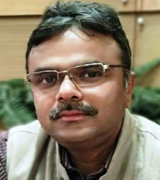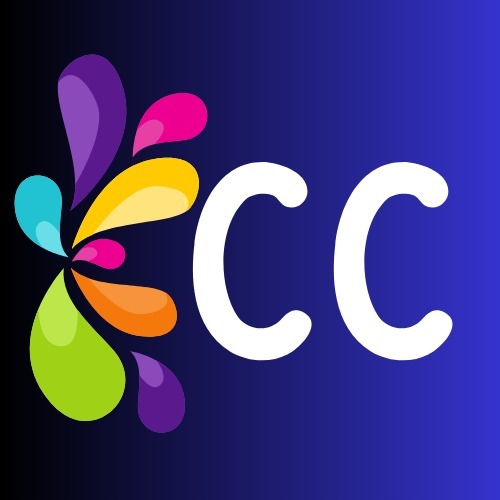Creation and Criticism
ISSN: 2455-9687
(A Quarterly International Peer-reviewed Refereed e-Journal
Devoted to English Language and Literature)
Vol. 07, Joint Issue 24 & 25: Jan-April 2022

Research Paper
Can Literary Language be Defined?
Nilanshu Kumar Agarwal
Abstract
In the contemporary era of Postmodernist absurdist nonsense, language has broken down. No language can describe the ultimate human experience. All signs are figurative and don’t indicate anything substantial, concrete and tangible. Poetic language deviates from the set patterns of grammar, syntax, diction, prosody etc. Poetry is a ‘pseudo-statement’, basing itself on personal angst of the humans. The Post-structuralist critics believe that all languages are rhetorical and metaphorical. Everything that is written, spoken or expressed is in metaphorical language. Deconstructionist aporia approaches all texts in an indecisive and uncertain manner. No hypothesis about the literary language can be called perennially universal. Every literary ideal is relative to time and space.
Keywords: Validation, Metaphor, Deconstructionist aproia, Subjectivity, Patriarchal Structure
Countless philosophers, authors, literary theorists and linguists have been engaged since the ages in the task of defining the literary text and thereby distinguishing it from the non- literary form of communication. Prior to entering the mazes of these philosophical ruminations on these topics, it is essential to understand the true meaning of the term definition itself. Definition has been defined by Merriam Webster Dictionary as “a statement expressing the essential nature of something.” Cambridge Dictionary defines it as “a statement that explains the meaning of a word or phrase.” Just these two definitions are opening up several philosophically entangling epistemological questions. Definition is supposed to be expressing the basic nature of a thing or the meaning of a word. Any sort of expression, be it oral, written or facial, may not describe the complete truth about a thing. In a way, human mind may not even perceive the complete thing; it just sees only some out of the countless shades of the thing. Only a tip of the iceberg is visible and that too differently by different people. Human psyche is pervaded by blurred illusions, dusty imaginations and smoky confusions, which disfigure and distort the thing. Complete objectivity is a sort of illusory mirage and the real is beyond human perception. Images, appearances, copies surround the mind which disallow the access to the truth. Theoretical formulations of Syadvada in the Jaina school of Philosophy lay emphasis on the relativity of Truth. Ramakant Sinari has elaborated the concept thus: “Syadavada, the doctrine of relativism of judgments, states that all actual and possible assertions in regard to an object are relative and, therefore, conditionally true or false. No judgment can be absolutely true, or absolutely false. What is judged about a thing by one person may be valid from his own standpoint. A standpoint is circumscribed by the point of time and the sense in which it occurs. Thus, when one makes an assertion about something, one’s assertion is as true as, or as false as, any other statement. No judgment is final; no predication is wholesome; no description is complete.” Chandradhar Sharma has also examined this theoretical formulation of Syadvada and found all knowledge to be relatively true: “Syadvada is the theory of Relativity of knowledge. Reality has infinite aspects which are all relative and we know only some of these aspects. All our judgments, therefore, are necessarily relative, conditional and limited” (52). Nothing is categorically absolute, conclusively final and decisively certain; rather everything is the subject to change, flux and fluidity. At this juncture, it is proper to quote Nietzsche who has also held that the infinitude of Truth is almost inaccessible: “Man himself, however, has an invincible tendency to let himself be deceived, and he is like one enchanted with happiness when the rhapsodist narrates to him epic romances in such a way that they appear real or when the actor on the stage makes the king appear more kingly than reality shows him” (514).
Anything, that is perceived, is thus merely a fig of imagination shorn of all objective criteria of validation. In a way, all thought is metaphorically literary. Terence Hawkes has outlined the concept of Metaphor: “The word metaphor comes from the Greek word metaphora derived from meta meaning ‘over’, pherein, ‘to carry’. It refers to a particular set of linguistic processes whereby aspects of one object are ‘carried over’ or transferred to another object, so that the second object is spoken of as if it were the first” (1). Minds don’t perceive the things in themselves.
Not only perception, but all modes of expression are also figuratively metaphorical. In the contemporary era of Postmodernist absurdist nonsense, language has broken down. Words do not express; they confound. No language can describe the ultimate human experience. The greatest problem for the contemporary man is how to communicate, as language does not indicate the phenomenon. Eliot, though belonging to the heyday of modernist tradition, was perturbed by this Babel like disorderly and chaotic incommunicability of the language. He deployed the historical sense to deal with this issue of incomprehensibility of language: “… historical sense involves a perception not merely of the pastness of the past, but of its presence; the historical sense compels a man to write not merely with his own generation in his bones but with a feeling that the whole of literature of Europe from Homer has a simultaneous existence and composes a simultaneous order. This historical sense is what makes a writer traditional.” The ennui of the devastatingly disastrous modern life has been presented through a collection of borrowings from past authors in The Waste Land. Moreover, linguistic signs are arbitrary and there is no real connection between the word and the thing. Saussure’s The Course in General Linguistics is seminal book detailing this arbitrary nature of the language. There is no valid reason for the symbols of the language. They are completely whimsical and hence do not reflect the reality. Words can’t narrate the features of the thing. W. Terrence Gordon has simplified the Saussurean linguistics in these words: “The linguistic sign is arbitrary. Rivers of ink have flowed in the discussion of this notion. To keep clear about what Saussure meant by it, we have to remember that his Sign has two parts, and that what is arbitrary (determined by choice; randomly chosen) is making the connection between them. Language can make any connection it chooses. When the first language came into existence, when the first word (Sign) came into existence, any sound or sequence of sounds (Signifier) could have been chosen to express any concept (Signified)” (25). Signs have been deployed randomly and thus don’t truly denote the object. Linguistic anarchy may it be called. If linguistic signs had been true and referring to the objects, these things must have been denoted by the same signs in all languages. The word ‘cat’ does not denote all the features of the animal ‘cat’, as till date no object has been fully known to the humans. Traffic lights don’t have in themselves anything to denote ‘stop’ or ‘move’. It is the convention of perceiving the lights thus.
This way, all signs are figurative and don’t indicate anything substantial, concrete and tangible. They are just the airy things. The iconic I.A. Richards had outlined the scientific and emotive uses of the language. Scientific language is denotative; it refers to the object. It is literal, manifest, unambiguous, transparent and clear. It carries only one meaning and that can be easily excavated by any serious reader. It is orderly, systematic, well-knit, logical, rational and reasoned. Being the language of Enlightenment era, in is the repository of all conventional wisdom. Emotive language on the other hand is the language of poetry. Being connotative, it has multiple layers of meanings. Being ambiguously ironical, it commits semantically nonsensical anarchy. Poetic language deviates from the set patterns of grammar, syntax, diction, prosody etc. Poetry is a ‘pseudo-statement’, basing itself on personal angst of the humans. Analyzing Richards’ Science and Poetry, Charles I. Glicksberg writes: “… man cannot rest satisfied with science alone; true statements are not enough; he must have fictions, substance of faith.” The grand edifice of poetry rests on the departure from the objectively realized logical structures of language to the innovations in it. Roman Jakobson has held that poetry is concerned with ‘organized violence committed on ordinary speech’. Ordinary speech is factual, familiar and known. It is too close to the cognition to create any buzz. If anything is too common and near, people don’t recognize it. Human mind recognizes something at a distance. If the mind is too used to or accustomed to something, it does not know it properly. The new shirt, that is purchased from the mall, loses its shine for the mind after it is worn two or three times. The shirt has not lost its glitter; it is the mind that becomes familiar with the object and loses interest in it. The sense of novelty goes missing due to overuse. The walls of the home, though painted with the costliest paints available in the market, are not seen as something new by the mind. They lose the sheen. Couples don’t recognize the true value of the partners because of too familiar proximity. The shock of absence in such cases renews the monotonous marital lives. Donne in ‘A Valediction: Forbidding Mourning’ had reminded that separation of lovers is not ‘a breach, but an expansion’. To get the feel of the complete thing, a sort of shock therapy is required to shake the highly accustomed, familiar, automatic and mechanical responses. Ordinary speech has also become too common and automatized to create any sensation for the readers. To awaken the readers from their shell through the modes of novelty and surprise, poetic language must defamiliarize itself. It must become uncommon, unconventional, bizarre and Gothic. It must break the common linguistic practices of the speech to make itself audible to the readers. It is the tendency of the human mind that it gets bored by an object after some time. Language is no exception. In order to survive, the poet reinvents the language. It is a language, known only to the whimsical fancies of the poet. It deviates from the norm; it shatters the linguistic orthodoxy by opening the floodgates of multiple meanings in it. In a way, it is absurdly anarchic and almost bordering on the void of nihilism.
On account of deploying this unorthodox sort of defamiliarized idiom, the poet is mocked, trolled and exiled from the Ideal State. Plato had asked the poets to leave the Ideal Republic, as their creation is twice removed from the real. William K. Wimsatt and Cleanth Brooks have significantly examined Plato’s indictment of the poets’ universe: “In Books II and III of the Republic it appears that poetry is engaged in fictions—often, moreover, in wicked fictions—wicked lies” (11). Rebutted thus, the poet is forced to write defences of poetry. There is a long tradition of Workshop critics, who defend their creative oeuvre through their critical pronouncements. T. S. Eliot had called criticism ‘a by-product of my private poetry-workshop’. About this relationship between Eliot’s poetic output and his critical formulations, L. G. Salingar has written thus: “In his critical essays, Eliot is deeply concerned with his practical interests as a poet… His critical pronouncements form a tricky instrument for the understanding of his own poetry” (337). Virginia Woolf’s novels are a headache to the readers due to her highly personalized style of writing. Her feminine subjectivity is almost incomprehensible for the routinely objective patriarchal structures of language. The author is compelled to write a justification of her technique in the essay ‘The Modern Fiction’.
The artists and poets have been misunderstood since the ages because of the creation of separate universe by them. He is sovereign of the universe where he deploys language and style as per his own imagination. Poetic language is subversive that effaces the conventional storehouse of language and for that many a poets are chided by the so-called status-quoist guardians of orderly language.
In the early decades of the twentieth century, a number of scholars including I. A. Richards and the Russian formalist critic Roman Jakobson vouched for a separate poetic zone, away from the methodical denotative scientific zone. However by the middle of the previous century, this binary of literary vs. non literary is getting obliterated. The dividing line between the two fields is getting thinner day by day and ultimately there is no difference between the two. Literary language is interfering and thus entering into the realms of the non- literary. All languages are becoming literary. The Post-structuralist critics believe that all languages are rhetorical and metaphorical. Everything that is written, spoken or expressed is in metaphorical language. Text has a subtext and it has several underlying meanings. There is not one but several meanings of the text. Power structures were controlling the unilinear meanings. Masses approach the text within the narratives set by the structures of cultures. Meanings are culturally ingrained and canonized. Deconstructionist aporia approaches all text in an indecisive and uncertain manner. And thus, there is a bombardment of new meanings. The interpretations that were thrown to the background are re-emerging and thus unstable literary is entering the domains of the fixed zones of the Enlightenment era. Professor Rajnath has elaborated this blurring of the boundaries between literature and other disciplines in Derrida: “Derrida does not distinguish between literature and other disciplines like psychology, politics, linguistics etc. They are all grouped together under the rubric of ‘human sciences’. Like Nietzsche before him, Derrida views philosophy in the rhetorical mode. As metaphors, metonymies and other figural devices are all pervasive in language, truth or, the conveyance of truth is impossible: all that can be expressed is the illusion of truth which is characteristic of rhetorical mode” (51). All ideas, thoughts and their expression are relative to time and space.
Innumerable discursive texts exist on the nature and functions of literature and its various genres. Plato found ‘poetry to be twice removed from reality’. Aristotle called tragedy ‘an imitation of action’. Longinus emphasized on the capacity of the poet to transport the reader. While Wordsworth declared poetry to be spontaneous overflow of feelings, T. S. Eliot declared that ‘poetry is not a turning loose of emotion, but an escape from emotion’. There is no dearth of opinions about the nature of poetry and the ways of reading the same. Some pay attention to the content of literature, while other pay heed to the form of the same. In a way, these critical formulations about the nature of literature are also literary and metaphorical. They don’t tell the complete truth about the same. All views about poetry are also partially true. The only thing that can be said with firm conviction is that all propositions about the nature of literary language are merely projections. All the theoretical formulations about literature and language, as is also the case with any other discipline of study, are kinetic, dynamic, ever-evolving and subject to change. Literary theory is not absolute; rather it is in a state of complete flux, where every decade a new formulation gains currency. No hypothesis about the literary language can be called perennially universal. Every literary ideal is relative to time and space. Proper reading of Upanishadic doctrine of Neti Neti, Heisenberg’s principle of uncertainty and Hamlet’s procrastinating detour into indecision may elaborate the dynamic nature of literary theory.
Works Cited
Eliot, T.S. “Tradition and the Individual Talent.” Selected Prose. Ed. John Hayward. Penguin, 1963.
Glicksberg, Charles I. “I. A. Richards and the Science of Criticism,” The Sewanee Review 46. 4 (1938) 520–33 http://www.jstor.org/stable/27535493 accessed on 8 Apr. 2022.
Gordon, W. Terrence. Sassure for Beginners.1996; Chennai: Orient Longman, 2002.
Hawkes, Terence. Metaphor. London: Methuen, 1972.
https://dictionary.cambridge.org/dictionary/english/definition accessed on 7 Apr. 2022.
https://www.merriam-webster.com/dictionary/definition accessed on 7 Apr. 2022.
Nietzsche. qtd. The Philosophy of Nietzsche. Geoffrey Clive (Ed.). New York: Mentor Books, 1965.
Rajnath. Essays in Criticism. Delhi: Doaba House, 2004.
Salingar, L. G. “T. S. Eliot: Poet and Critic.” The Modern Age. Ed. Boris Ford. Harmondsworth: Penguin, 1966.
Sharma, Chandradhar. A Critical Survey of Indian Philosophy. New Delhi: Motilal Banarsidas, 1991.
Sinari, Ramakant. “A Pragmatist Critique of Jaina Relativism.” Philosophy East and West, 19.1 (1969): 59–64
https://doi.org/10.2307/1398097 accessed on 7 Apr. 2022.
Wimsatt, William K. Jr. and Cleanth Brooks, Literary Criticism: A Short History. Alfred A. Knopf, 1957.
About the Author:
Dr. Nilanshu Kumar Agarwal (b. 1973) is Associate Professor of English at Feroze Gandhi College, Raebareli, Uttar Pradesh, India. He was awarded D.Phil degree by Allahabad University for his doctoral dissertation, entitled “T. S. Eliot’s Poetry in the Light of his Critical Thoughts”. Dr Agarwal’s chief interest is in Indian Aesthetics, Diaspora and Contemporary Critical Theory and Dalit Literature. He can be contacted at nilanshu1973@yahoo.com


